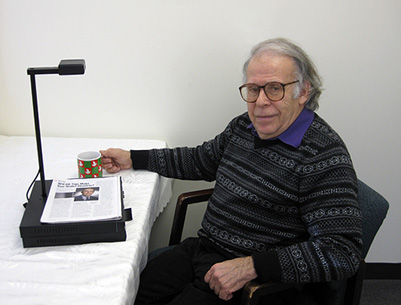|
 CLEARING & AUDITING CLEARING & AUDITING
The Underlaying Basis Of Auditing
The existence of aberration stems from our need to create and experience everything. But, for a god like being, this is much like viewing an occasional horror movie to keep the more desirable conditions from becoming too monotonous. There is nothing here that requires a persistence or perpetuation of aberration. You should be able to shrug these things off effortlessly.
The persistence of aberration, on the other hand, is a grave mistake and is due to a basic conflict between the wrong information we were fed (see "jewel of knowledge" in #2 "Cosmic History"), and the true nature of our existence. The factors in conflict are as follows:
At the beginning of our existence, we were mislead into believing that thinking, perceiving, experiencing, or creating certain things could be permanently harmful to us. From this, we began to flinch or withdraw from various things. And those things were then used (by each of us against the others) to further discourage looking, and being, and thinking, and doing until we have all sunk into a morass of mental blindness and incapacity.
But, if we are indeed balancing nothingness with an infinity of creation (as I proposed in "Cosmic History"), then we will never get rid of anything unless we are capable of creating it again in the future, because we would be unwilling to lose anything on a permanent basis. This would mean that you will never uncreate anything unless you look at it so completely that you could mock it up again.
And thus things persists because we mistakenly believe that we should not look at them and must not create them. On this basis, if something can be brought fully into view, it should at least desensitize. And if the person can be made to mock up a perfect duplicate, and therefore see that he is capable of recreating it at will, then he should be able to completely vanish the object or condition if he so chooses.
And if we further realize that the willingness to create something is monitored by the willingness to be responsible for the existence of the thing and the effects it creates, we see that responsibility is a key underlying button. And since controlling something is the act of being responsible for the effects that it is currently creating, we furthermore see that control of something is a gradient towards full responsibility. And to control something, you certainly need to know about it. This gives us the Knowingness / Control / Responsibility triangle (KRC) that is used in Scientology.
Coming at this from another angle, it should be obvious that fully viewing something and being able to duplicate it is monitored by one's ability to communicate with it. And this is also monitored by the perception of the reality of it. And furthermore, a complete duplication would require the ability to, shall we say, synchronize or move in sympathy with it, which could be described as having an affinity or liking for it.
This last button of needing to have affinity might be the big problem because we have been shown that you're not supposed to like things that are bad, and you're not supposed to like two things that are in conflict with each other, and (most deadly), if you like something and then change your mind, it's considered a betrayal. To get rid of a bad condition, you might have to (just very briefly) choose to like it and that often comes in conflict with all three of the above.
The factors of Affinity, Reality, and Communication are what is known as the ARC triangle in Scientology.
And so we see that to bring about the vanishment of a condition, we restore the ability to create that condition and we can work towards this by gradient scales of increased looking, communicating, knowing, controlling, taking responsibility, etc. This is the exact opposite of how things are handled in the society at large where undesirable conditions are buried and suppressed and kept out of view. This, per my opening remarks, would ensure that we will continue to compulsively create them out of our control.
Those of you who are trained as auditors will see that I have taken a different path than LRH did in specifying the theoretical basis of auditing, but we do come to the same conclusions

Eternity by aiRaGe
How Much Of The Mind Is Accesible
Every intelligent researcher in the field has recognized that there are portions of the mind that the individual is unaware of. Even the most meat body oriented theories have to allow for a vast realm of unobserved activity and the statement that you are only using 5% of your brain or mind is quite commonly accepted.
One of the early Dianetic principles was the idea that if anybody had some inherent mental ability (such as total recall, lightning fast computations, etc.), then the ability must be an inherent property of each and every mind and must in most cases be buried and blocked in this unaware section of the mind. The brilliance of this observation was partially tarnished by the inadequate one lifetime view and the mistaken idea of blaming everything on recent engrams. None the less, it expanded the concept of what must be hidden in that unseen area below the level of consciousness.
The breakthroughs of 1952 opened up an immensely larger sphere in which the individual should be capable of operating but where he was even less aware and disabled. The manifestation of any OT ability, ever, by anyone, would on this basis indicate that everyone is capable of these things but has them buried far out of reach. And these things do happen, just look at Rhine's research or the endless history of observed poltergeist manifestations. As an interesting side note, any such manifestation also invalidates the absoluteness of physics and places it in the position of being a special case in much the same way as modern physics (both Einstein and quantum) placed Newtonian physics into a limited (but exceedingly common and useful) special case.
We could label this hidden portion of the mind many ways. We could call it the subconscious, but that has many undesirable connotations for our purposes here, as does the term "unconscious". Even the label "Reactive Mind" has many implications which might be correct for some portions of this hidden area but which are not necessarily true for all of it.
The only sweeping statement we can make with certainty is that this portion of the mind is subaware or below the individual's level of awareness. Since there is no indication that the whole thing is homogenous, we should realize that we are always dealing with relative truth rather than absolutes. An accurate anatomy of, for example, engrams, only maps one portion of this hidden area and leaves much else to be discovered. One of Ron's main weaknesses was his tendency to grab a single factor, whether it was overts or implants or entities or whatever, and decide that he finally had the solution to it all.
Our primary task in auditing is to move things from this hidden realm into consciousness.
A useful (but not entirely accurate) analogy is to draw a box and place a horizontal line across the middle of it, and label the upper section as aware and the lower section as hidden. We might even shade in the lower area to represent the blackness that comes from lack of awareness. Our job would be to keep moving that line down until everything in the box was within the person's awareness.
But the boundary between the aware and hidden portions of the individual's mind is not a simple line. It would be best thought of as a gray area in which he is almost aware. This band may be thin or thick and the wider it is, the more things he has that are accessible to simple processing. If the line is too thin, there might only be a handful of things that he can look at to raise his awareness and great skill and understanding are required to get any kind of results in working with him. If the gray area is exceedingly wide, almost any technique ever dreamed up by anybody will produce positive results because there is so much that is accessible.
As the individual moves things from this gray area into full awareness, the gray area does not shrink, instead it moves downward to encompass more things that were previously unreachable. The individual has a certain tolerance for unknown, frightening, or confusing things and he will allow more of the deeply buried stuff come up to the surface as you clean up the things that are currently accessible. It makes it look like an unending job because there's always something more, but this is a wrong view brought about because the hidden area is orders of magnitude larger than the conscious area. Never worry about how much more he is finding because this may actually be a positive indication that he is able to tolerate a wider gray area. Instead, pay attention to whether he is resolving things and becoming more able and more aware.
The things that are in your full awareness are not the source of your difficulties. And the things hidden down in the mud are just too deeply buried for you to figure them out until you have worked deep enough to bring them up into the gray area. Therefore, the only things that you can make progress on are the ones in this gray band. Those things, shall we say, that are half obscured but somewhat in view. For this reason, there will be aberrations that you're not going to get anywhere near handling. It doesn't matter how slight or silly something seems, the cause of it could be ten fathoms deep. So never get evangelistic about some disability, it can be heartbreaking. Instead, you always work on what is accessible and keep going deeper.
But it is very useful to widen this gray area. It makes more things accessible. It gives you more angles of approach (and we don't know the right way to address everything). It allows more room for error. And it lets you get deeper and undercut things and therefore leads to faster progress in general.
Simple things like being well fed and rested will expand the gray band because you are more willing to look deeper. Things like courage and confidence, knowledge and determination all play a role in this. And the more you succeed, the more you are willing to grapple with so that eventually you're digging this thing out with a steam shovel instead of handling tiny specs of dirt.
Types Of Auditing
Let me first warn you that the CofS currently considers self-auditing to be dangerous. I disagree because this is where the mind's protection is the most effective. However, the gray band of accessibility can become extremely narrow so that most self-auditing is unproductive of results.
The different types of auditing have a significant effect on how wide the accessibility band is. If you're being audited by a safe and knowledgeable person, you are much more willing to dive more deeply into the hidden portions of the mind than you would be if you were auditing by yourself.
Also, making mistakes Vs having successes is a major factor in accessibility. Early on, when you know the least and are most likely to goof things up, you're better off with somebody who knows what they are doing. On the other hand, a bad auditor who screws things up might actually make the PC less accessible in session than he is when he is alone, hence there has occasionally been a problem with people self-auditing (and not doing very well at it) in between professional sessions that should have fixing them up but instead were making a mess of things.
Here is my list of the types of auditing, starting with the one that gives the greatest accessibility (if done right) and working down.

A) Professional Auditing Here, an auditor, who should be extremely skillful and knowledgeable, audits the PC (PreClear - from habit we even call OTs PCs). The PC is not expected to know very much. The PC is also expected to pay a lot, possibly with some justification since it is very hard to make a good auditor and the PC is doing very little for himself. Its the unnecessary and screwed up actions that cause people to really scream about the prices (who in their right mind would want to pay thousands of dollars for an unnecessary sec check for example). There is rarely any complaint if the right thing is run to a good result. I personally believe that this is a cop-out on the PCs part and a way to offload responsibility onto the auditor. Although this will give the widest band of accessibility at any given moment, it does not encourage the band to grow wider to the same degree that learning the subject will. Therefor I think professional auditing is best suited to repair actions and startup actions (to get someone moving) and should not be used as the main thrust. Furthermore, the PC has little idea of what is going on and he can be led into trouble by bad auditing or incorrect C/Sing (Case Supervision, which specifies what is to be audited). This is the only situation (outside of using drugs etc. to force yourself over your head) where somebody might get worse instead of better because he is usually reaching much deeper than normal because he expects the auditor to keep him safe. 
B) Co-Auditing
Here the person studies the materials and is paired up with another person who is doing the same. They take turns auditing each other. In this case, the co-auditors can get away with the sloppiest techniques and still produce fantastic results on each other because the person being audited is well aware of the procedures and purposes and is taking responsibility. The only really critical factors are ARC and a desire to help. The mere presence of somebody else who is willing to listen and give assistance gives a tremendous boost to this factor of accessibility. I believe that this is the way to go for most people until they reach a point where they can make good progress on solo auditing. The ideal situation would be to have a professional auditor available to give assistance in case of trouble. 
C) Solo Auditing Here the person goes at it by himself, but with the full formal procedure of auditing. He uses an E-meter and writes things down in a professional manner. In the CofS, solo auditing is always done with a Case Supervisor who reads the sessions and issues instructions. This ensures that there is still an external communication line and that someone else is there to provide missing knowledge or an external point of observation. Although the band of accessibility will be narrower than in a co-audit, this has the big advantage that the person, as his own auditor, has an internal communication instead of having to relay everything in words and it also raises the person's responsibility even further. The same formal procedures will work without a case supervisor if the person has enough understanding of the subject. The sessions should still be written down, because this helps get everything exterior to the person. The band of accessibility will be found to be narrower because there is nobody else there to bail you out if you get into trouble, but if it is already extremely wide, because of a great deal of study and determination, then it can still be adequate to the task. 
D) Self auditing
In the final analysis, the only way out is to become a fully self-clearing individual. If you're floating around in a bodiless condition without a book or an E-meter and there's no one around who knows enough to give you a hand, you should still be capable of taking anything apart and setting yourself free.
But you can't self audit in the absence of understanding and without any workable techniques. People have been known to just spin around endlessly just figure figuring and getting nowhere. If people could do this right on an instinctive basis, we would already have gotten out of here. The problem is that we swallowed a whole lot of wrong data early in our existence and it predisposes us to becoming abberated. So the person's instinct is often wrong and leads him into a downward spiral.
Furthermore, the band of accessibility is at its narrowest in this case because the individual has no help. If you are extremely advanced and very knowledgeable, then it doesn't matter so much because the band is incredibly wide anyway, but if you are just beginning and know little and have little perseverance or determination, then the band might be so tiny that little progress can be made.
There is also the research question of developing techniques which are conducive to successful self auditing. Unfortunately, the CofS has leaned away from this. There are some exceptions, like the book "Self Analysis", but generally this is an untapped area.
My own experience was that I was able to successfully self audit the route 1 procedures in "Creation of Human Ability" based on reading the book shortly after I joined the subject. Although this didn't fully turn on real OT abilities, it was a lot of fun and I believe that it set me up for the big OT key out that I had the following year.
According to the Philadelphia Doctorate Course tapes, the OT drills are self auditable if you know the materials well enough, and they can be done immediately on a certain percentage of new people when they walk in the door (these were what was then referred to as Step 1 cases, people who could run step one without preparation). But this research line was pretty much abandoned.
On the other hand, the Dianetic techniques in DMSMH absolutely cannot be self audited. Something like Dianetic repeater technique is almost dangerous even in professional hands, nothing to say of having people go try it by themselves. But that is mostly because it is a poor technique on any basis. The modern Dianetic techniques are smoother and easier, and possibly could be self audited by a very advance case, but such a case would probably be a Dianetic clear already and the technique would actually be in his way and inappropriate to use.
But there is a self auditable technique for running engrams. It consists of alternately spotting something in the incident and something in the room. This can actually let you recover the unconscious period of an operation and bring up the words being spoken and everything. You just need to persist with it long enough. We still have the problem of accessibility. Some cases are just not up to running engrams. But if they are, this trick will work almost as well as the modern Dianetic R3R procedure, with the difference being that it is slower but does not require an auditor or an E-meter.
It is almost criminal not to have a technique like this and teach it to people as soon as they are up to running engrams. What if the person should die? This is one of the few ways that they could run out the death experience successfully.
Furthermore, this one works for Dianetic clears without the liabilities of running R3R (which can get the NOTS aspects of the case all stirred up if too much of it is done after clear).
The technique would be to "Spot an incident underlying (condition)" and then alternately spot something in the incident and something in the room until something happens. Then spot another incident underlying ... etc. until the condition is handled. In general, you should not ask for an "Earlier Similar" incident when doing this on a clear because the "engram chain" mechanism is not fully operative after someone goes clear. A looser question allows for an earlier similar to be run if one is there but doesn't force it. This is actually more of a high powered recall process rather than true Dianetic picture running
| |









